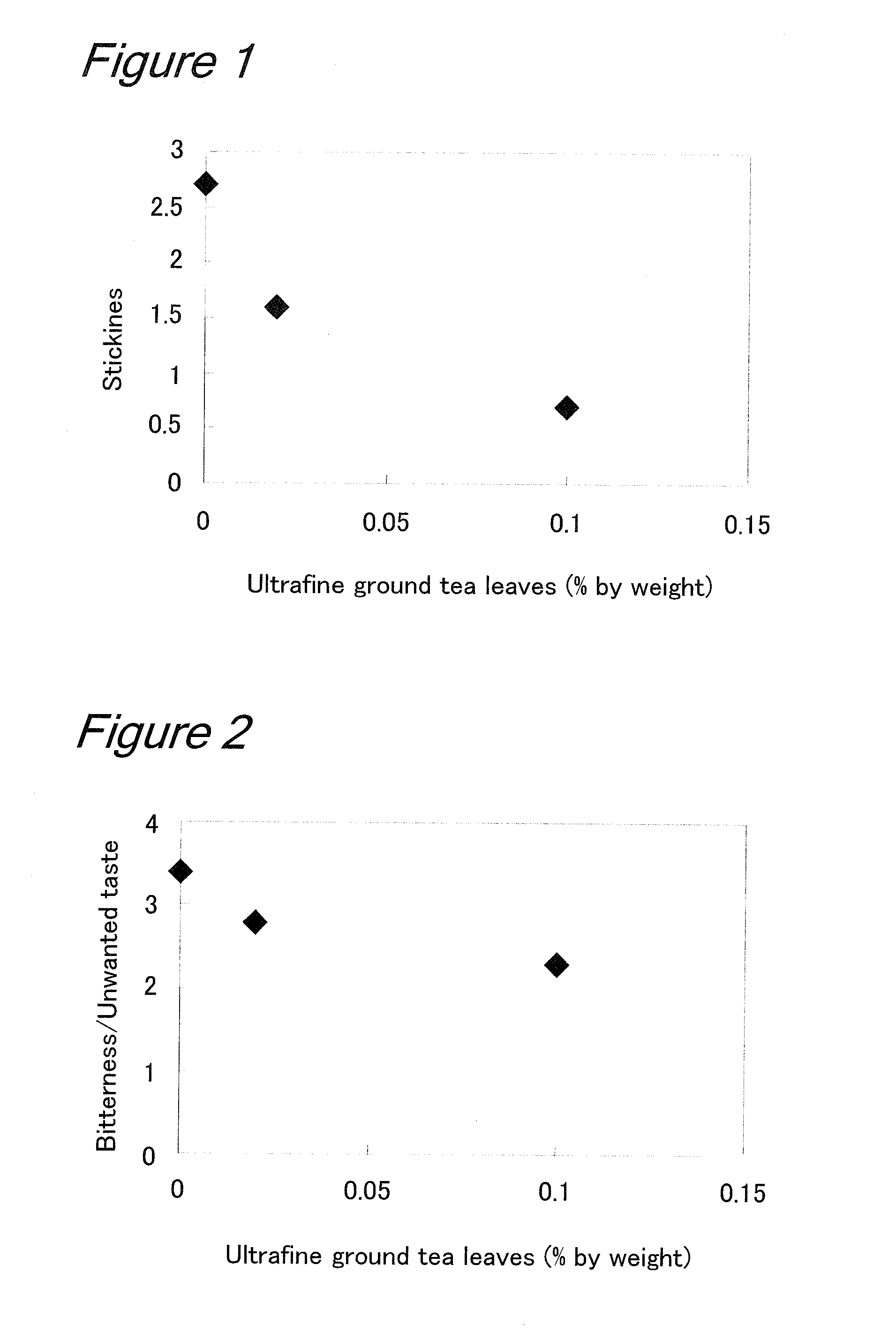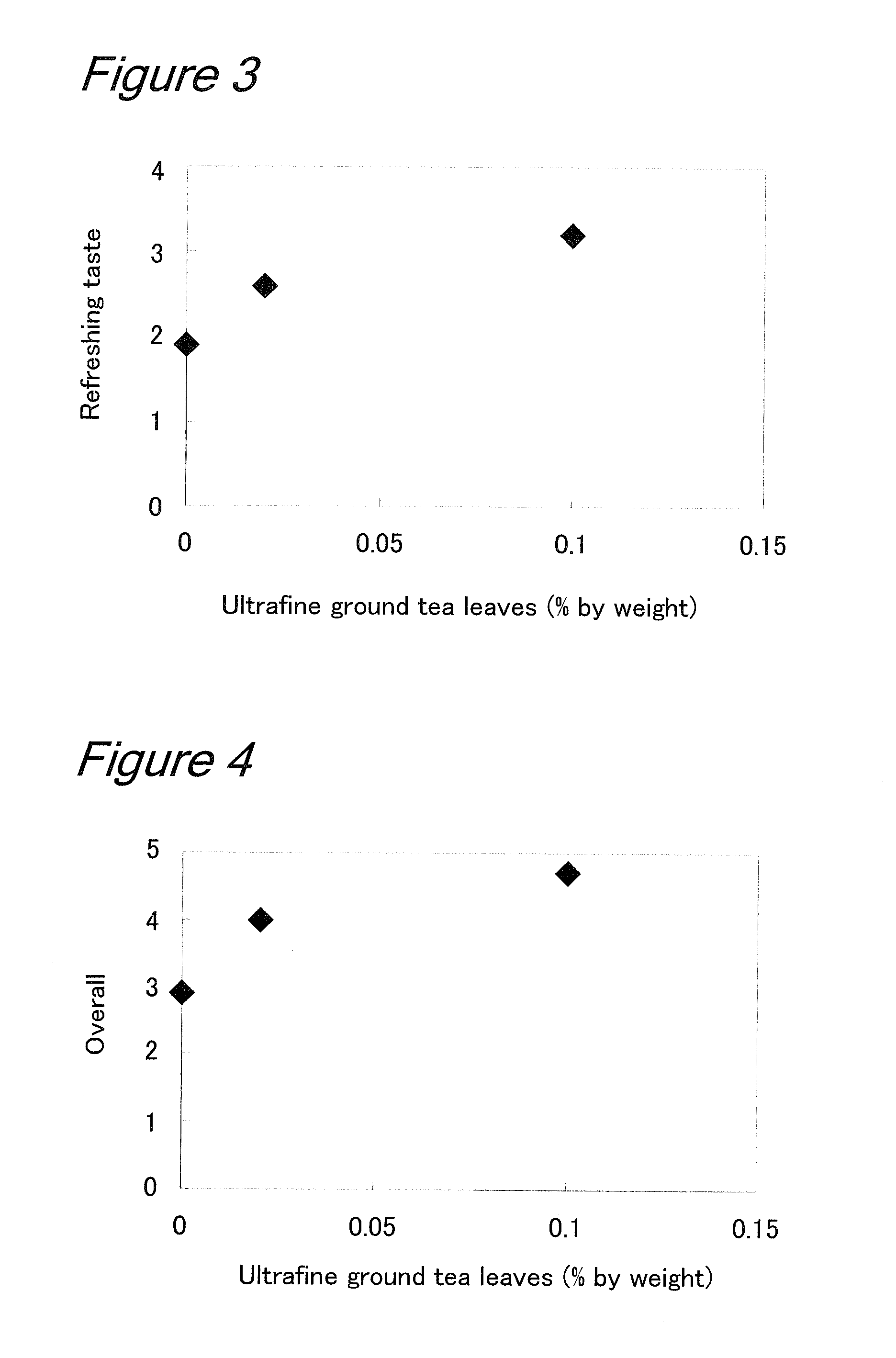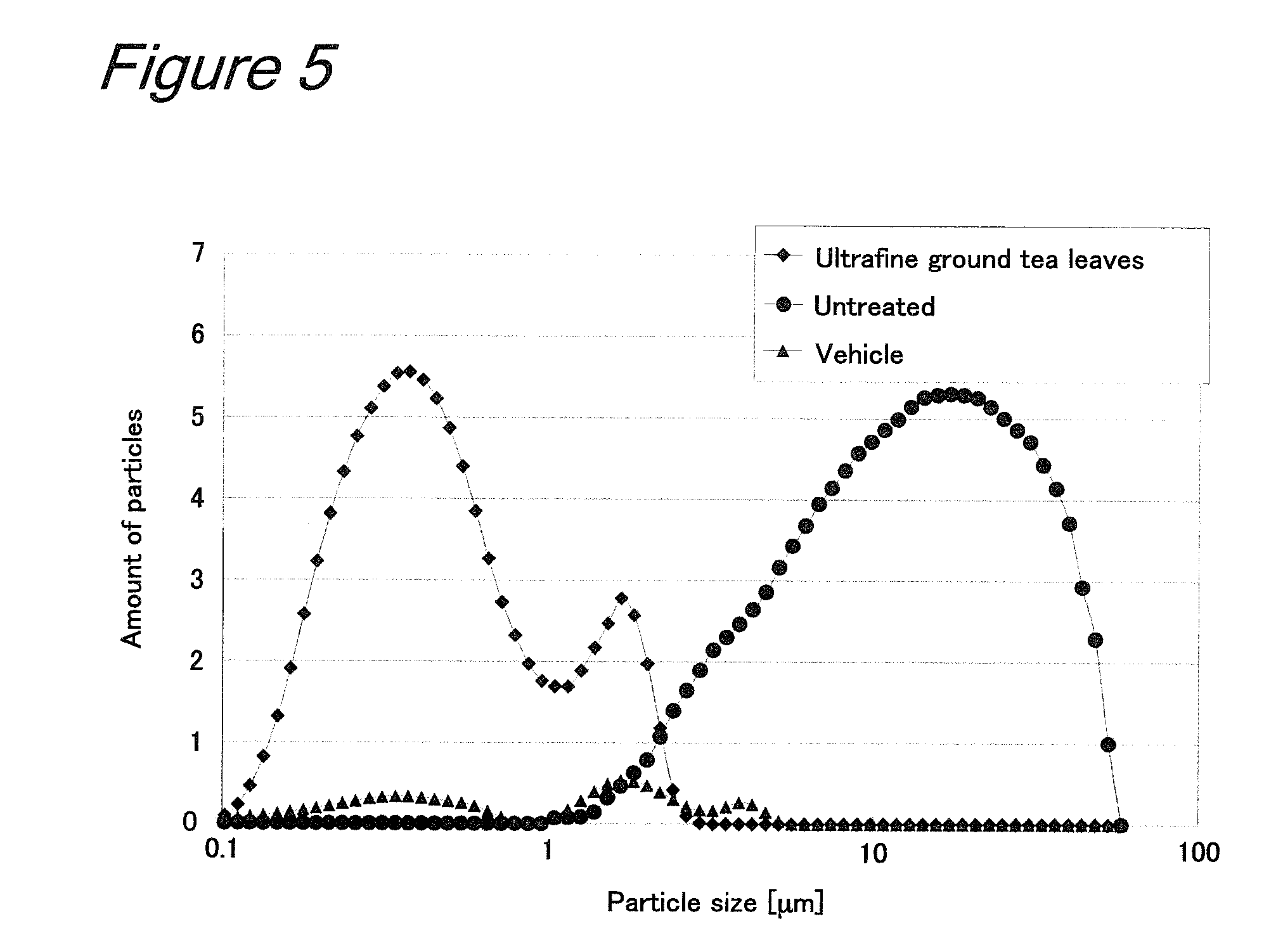Cereal tea drink
a technology of cereal tea and beverages, applied in the field of cereal tea beverages, can solve the problems of unsatisfactory brown rice tea beverages, adversely affecting the aroma balance, and affecting the refreshing taste of tea beverages, and achieves the effect of good taste and flavor, and easy production
- Summary
- Abstract
- Description
- Claims
- Application Information
AI Technical Summary
Benefits of technology
Problems solved by technology
Method used
Image
Examples
example 1
Brown Rice Tea Beverage (1)
[0056]A cylindrical column extractor having a 50-mesh wire gauze was charged with green tea leaves (80 g) and brown rice (120 g), and the upper surface of these starting materials was flattened to a uniform height. Next, ion exchanged water heated to 91° C. (800 mL) was supplied through a shower nozzle located at the top of the column. At 10 seconds after completion of the water supply, ion exchanged water heated to 91° C. was supplied at a rate of 350 mL / min through the shower nozzle located at the top of the column, simultaneously with discharging an extract at the same rate from the bottom of the column At the timing where the volume of water supply from the shower reached 4.2 L, the water supply was stopped and the entire liquid was discharged from the bottom of the column to obtain an extract (cereal tea; green tea-containing brown rice tea). A volume of the extract corresponding to 0.2% tea solid content was taken and filtered, and the resulting filt...
example 2
Brown Rice Tea Beverage (2)
[0061]The same procedure as shown in Example 1 was repeated to give an extract (cereal tea; green tea-containing brown rice tea). A volume of the extract corresponding to 0.08% tea solid content was taken and filtered, and the resulting filtrate was mixed with sodium bicarbonate and L-ascorbic acid in the same amounts as used in Example 1 and with the ultrafine ground tea leaf dispersion (0.1% by weight as ultrafine ground tea leaves). A total volume of 1000 mL was sterilized and filled.
[0062]The resulting tea beverage was measured for its starch content and evaluated in a sensory test in the same manner as shown in Example 1.
example 3
Brown Rice Tea Beverage (3)
[0063]The same procedure as shown in Example 1 was repeated to give an extract (cereal tea; green tea-containing brown rice tea). A volume of the extract corresponding to 0.2% tea solid content was taken and filtered, and the resulting filtrate was supplemented with sodium bicarbonate and L-ascorbic acid in the same amounts as used in Example 1, followed by addition of the ultrafine ground tea leaf dispersion, such that the concentration of ultrafine ground tea leaves was 0.02% by weight in the beverage. A total volume of 1000 mL was sterilized and filled.
[0064]The resulting tea beverage was measured for its starch content and evaluated in a sensory test in the same manner as shown in Example 1.
PUM
 Login to View More
Login to View More Abstract
Description
Claims
Application Information
 Login to View More
Login to View More - R&D
- Intellectual Property
- Life Sciences
- Materials
- Tech Scout
- Unparalleled Data Quality
- Higher Quality Content
- 60% Fewer Hallucinations
Browse by: Latest US Patents, China's latest patents, Technical Efficacy Thesaurus, Application Domain, Technology Topic, Popular Technical Reports.
© 2025 PatSnap. All rights reserved.Legal|Privacy policy|Modern Slavery Act Transparency Statement|Sitemap|About US| Contact US: help@patsnap.com



